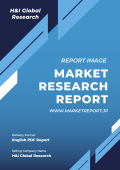Table of Contents
Chapter 1 Methodology And Scope
1.1 Market Segmentation & Scope
1.2 Market Definition
1.3 Information Procurement
1.3.1 Purchased Database
1.3.2 GVR’s Internal Database
1.4 Information Analysis
1.5 Market Formulation & Data Visualization
1.6 Data Validation & Publishing
1.6.1 Research Scope And Assumptions
1.6.2 List To Data Sources
Chapter 2 Executive Summary
2.1 Market Snapshot
2.2 Segmental Outlook
2.3 Competitive Insights
Chapter 3 Maleic Anhydride: Market Variables, Trends & Scope
3.1 Market Lineage Outlook
3.1.1 Global Petrochemicals Market Outlook
3.2 Industry Value Chain Analysis
3.2.1 Raw Material Trends
3.2.1.1 N-Butane
3.2.1.2 Benzene
3.2.2 Manufacturing Trends
3.2.2.1 Technology Trends
3.2.2.1.1 Fixed Bed Technology
3.2.2.1.2 Fluidized Bed Technology
3.2.2.1.3 Transport Bed Technology
3.2.2.1.4 Recovery From Phthalic Anhydride
3.2.3 Sales Channel Analysis
3.2.4 Vendor Selection Criteria Analysis
3.3 Price Trend Analysis, 2018-2030
3.4 Regulatory Framework
3.5 Trade Analysis
3.5.1 Import & Export Statistics, 2018 – 2022
3.6 Market Dynamics
3.6.1 Market Driver Analysis
3.6.1.1 Growing Demand For UPR In The Global Construction Industry
3.6.1.2 Flourishing Global Automotive Industry
3.6.2 Market Restraint Analysis
3.6.2.1 Volatile Raw Material Prices
3.6.3 Industry Challenges
3.7 Business Environment Analysis
3.7.1 Industry Analysis – Porter
3.7.2 Macroeconomic Analysis: PESTEL Analysis
Chapter 4 Maleic Anhydride Market: Application Estimates & Trend Analysis
4.1 Application Movement Analysis & Market Share, 2022 & 2030
4.1.1 Unsaturated Polymer Resin (UPR)
4.1.2 1-4, Butanediol (BDO)
4.1.3 Additives
4.1.4 Copolymers
4.1.5 Other Applications
Chapter 5 Maleic Anhydride Market: Regional Estimates & Trend Analysis
5.1 Maleic Anhydride Market: Regional Outlook
5.2 North America
5.2.1 North America Maleic Anhydride Market Estimates & Forecasts, 2018 – 2030 (Kilotons) (USD Million)
5.2.2 U.S.
5.2.2.1 Key Country Dynamics
5.2.2.2 U.S. Maleic Anhydride Market Estimates & Forecasts, 2018 – 2030 (Kilotons) (USD Million)
5.2.3 Canada
5.2.3.1 Key Country Dynamics
5.2.3.2 Canada Maleic Anhydride Market Estimates & Forecasts, 2018 – 2030 (Kilotons) (USD Million)
5.3 Europe
5.3.1 Europe Maleic Anhydride Market Estimates & Forecasts, 2018 – 2030 (Kilotons) (USD Million)
5.3.2 Germany
5.3.2.1 Key Country Dynamics
5.3.2.2 Germany Maleic Anhydride Market Estimates & Forecasts, 2018 – 2030 (Kilotons) (USD Million)
5.3.3 UK
5.3.3.1 Key Country Dynamics
5.3.3.2 UK Maleic Anhydride Market Estimates & Forecasts, 2018 – 2030 (Kilotons) (USD Million)
5.3.4 France
5.3.4.1 Key Country Dynamics
5.3.4.2 France Maleic Anhydride Market Estimates & Forecasts, 2018 – 2030 (Kilotons) (USD Million)
5.3.5 Italy
5.3.5.1 Key Country Dynamics
5.3.5.2 Italy Maleic Anhydride Market Estimates & Forecasts, 2018 – 2030 (Kilotons) (USD Million)
5.4 Asia Pacific
5.4.1 Asia Pacific Maleic Anhydride Market Estimates & Forecasts, 2018 – 2030 (Kilotons) (USD Million)
5.4.2 China
5.4.2.1 Key Country Dynamics
5.4.2.2 China Maleic Anhydride Market Estimates & Forecasts, 2018 – 2030 (Kilotons) (USD Million)
5.4.3 India
5.4.3.1 Key Country Dynamics
5.4.3.2 India Maleic Anhydride Market Estimates & Forecasts, 2018 – 2030 (Kilotons) (USD Million)
5.4.4 Japan
5.4.4.1 Key Country Dynamics
5.4.4.2 Japan Maleic Anhydride Market Estimates & Forecasts, 2018 – 2030 (Kilotons) (USD Million)
5.4.5 South Korea
5.4.5.1 Key Country Dynamics
5.4.5.2 South Korea Maleic Anhydride Market Estimates & Forecasts, 2018 – 2030 (Kilotons) (USD Million)
5.5 Central & South America
5.5.1 Central & South America Maleic Anhydride Market Estimates & Forecasts, 2018 – 2030 (Kilotons) (USD Million)
5.5.2 Brazil
5.5.2.1 Key Country Dynamics
5.5.2.2 Brazil Maleic Anhydride Market Estimates & Forecasts, 2018 – 2030 (Kilotons) (USD Million)
5.6 Middle East & Africa
5.6.1 Middle East & Africa Maleic Anhydride Market Estimates & Forecasts, 2018 – 2030 (Kilotons) (USD Million)
Chapter 6 Competitive Landscape
6.1 Participant’s Overview
6.2 Financial Performance
6.3 Product Benchmarking
6.4 Company Categorization
6.5 Company Heat Map Analysis
6.6 Key Company Positioning Analysis, 2022
6.7 Vendor Landscape
6.7.1 List Of Key Distributors & Channel Partners
6.7.2 List Of Key Customers
6.8 Key Company Market Share, 2022
6.9 Strategy Mapping
6.9.1 Expansion
6.9.2 Mergers & Acquisition
6.9.3 Price Hike
6.9.4 Other Strategies
6.10 Company Listing (Business Overview, Financial Performance, Application Benchmarking)
6.10.1 Cepsa
6.10.2 INEOS
6.10.3 Huntsman International LLC
6.10.4 Lanxess A.G.
6.10.5 Mitsubishi Chemical Corp.
6.10.6 MOL Hungarian Oil & Gas Plc
6.10.7 Nippon Shokubai Co., Ltd.
6.10.8 Polynt Group
6.10.9 Thirumalai Chemicals Ltd.
6.10.10 Jiangyin Shunfei
6.10.11 Tianjin Bohai Chemicals
*** 免責事項 ***
https://www.globalresearch.co.jp/disclaimer/











